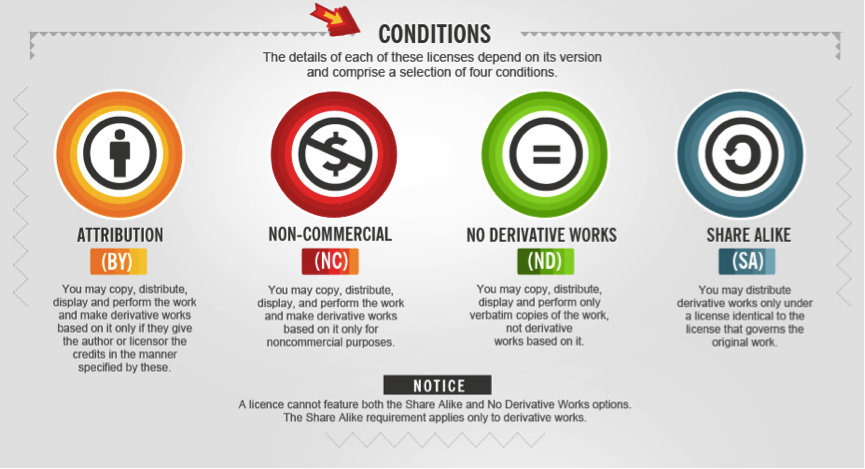Adapting an OER for a Course

Taken from OLCreate: About Creative Commons Licenses
One of the largest benefits of open educational resources is that you can modify and remix existing OER to meet the needs of your students and your courses this practice is called adapting OER. Not all OER are licensed to allow adaptation.If you are creating new OER materials, you will want to make sure your resources are as adaptable as possible. When considering adapting or creating OER, keep these features in mind:
- An Open License Allowing Derivative Works
Creative Commons licenses are the most common open licenses applied to educational resources. There are various types of Creative Commons licenses, but the ND (no derivatives) restriction should be avoided if you want to adapt a resource. An ND restriction tells users that they should not remix or modify your work. If a work has an ND restriction, users do not have permission to change anything within the resource.
- An Adaptable File Format
Many educators release their materials as PDFs, since they are usable on nearly every desktop and mobile device. If you are using a PDF made from scanned images, make sure that the text has been scanned by optical character recognition (OCR). OCR enables you to select and copy/paste text, which allows for much easier adaptability than transcribing entire passages with no copy/paste ability. To make a document even more modifiable, an author can provide a copy in a word processor format, such as a Google Doc,.docx, or .rtf, making the document editable straight from the file or link itself.
- A Modular Format
It is far easier to modify an open educational resource that has been divided into modules (sections) than it is to modify one gigantic OER. Generally, the more modular your content is, the easier it is to adapt. Most OER repositories offer content in a modular format, through chapters or subject links. OpenStax College textbooks are separated not only by chapter, but also by subchapter, making it easy to mix and match sections for an adaptation.
This information is adapted from:
Affordable Learning Georgia, Help with Creating OER, Determining the Adaptability of a Resource
Quick Check: